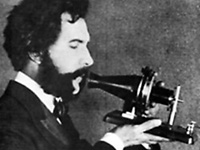 The telephone was not invented in order to do what people eventually used it to do. It may seem obvious what a telephone is good for, but even its inventors—Alexander Graham Bell and his assistant Thomas Watson—were not clear about it when they first demonstrated it. Nor were those who attended their demonstrations and gasped in astonishment at what they heard.
The telephone was not invented in order to do what people eventually used it to do. It may seem obvious what a telephone is good for, but even its inventors—Alexander Graham Bell and his assistant Thomas Watson—were not clear about it when they first demonstrated it. Nor were those who attended their demonstrations and gasped in astonishment at what they heard.
On February 18, 1877, Bell and Watson gave a lecture and exhibition in which they transmitted speeches and songs between Boston and Salem, Massachusetts. The following day, Watson gave an interview to a reporter for The New York Sun, and talked about the future of the telephone, as he and Bell saw it:
"I haven't the slightest doubt," Mr. Watson said to-day, "that in a few months things will be so that a man can make a lecture here in Boston and be heard by an audience in any part of the country."
"Do you expect that the telephone will entirely supersede the present system of telegraphing?" I asked.
"Yes, we expect it will, eventually. A company is now forming for the purpose of manufacturing and introducing the instrument. In time it can't fail to replace the old dot and line alphabet system entirely. We expect, at first, it will be used mostly on private lines and for city business. It will probably take the place of the present district telegraph companies and the like, as it will be especially convenient for that class of business."
"Won't the receiving operators have to learn shorthand?"
"Yes, I suppose they will. In our experiments we have generally paused after saying a sentence, so that the receiver had time to write out in long hand."
Mr. Watson remarked that the introduction of the telephone would probably have the effect of increasing the telegraph business to such an extent that it would hasten the time when the wires would have to laid under ground instead of being strung on poles. [1]
This still conceived of the telephone as a kind of telegraph that would allow operators simply to speak and to listen at either end of the line without resorting to Morse Code. The message would be dictated on one end and written down on the other, for delivery to its recipient.
But at least one Boston Globe reporter understood that the invention of the telephone would make every person his or her own communications center:
 The lines might not be direct from point to point, but to and from ganglia in the form of central offices or stations, which have charge of the business, except where private parties see fit to maintain their own independent lines. Suppose this network to be established and in good working order. What a deal of running to and fro and of vexatious delay would be obviated! Smith in his office on State street, without moving from his chair, could say to Mrs. Smith at the Highlands, in his blandest tone of voice: "Going to New York tonight, my dear; have John take my carpet-bag to the Providence depot before 6 o'clock." Mrs. Smith's reply would be immediate and, of course, in a tone of cheerful acquiescence. Or Brown, in his store on Washington street, would ask a friend home to dinner, and communicate the fact to Mrs. Brown on the Back Bay, receiving at once a dutiful response which would be pleasant to the friend standing by and catching the sweet tones of her voice. Jones, in the midst of the distractions of his bills payable and bills receivable, would be interrupted for a moment by a familiar but far-away voice, informing him that his beloved wife was coming in town, shopping and would call at 2 o'clock for a little money, and then of course no pressing business elsewhere would keep him away from his counting-room at that hour. And equally, of course, his wife would receive a prompt and amiable answer, relieving her mind of all uncertainty. … The fancy will readily supply the thousand details of practical utility here suggested. State-rooms on steamboats, places in railway cars, room in a hotel, dinner from a restaurant, could be bespoken without the necessity of sending, and the satisfaction would be obtained which only a personal interview can secure. [2]
The lines might not be direct from point to point, but to and from ganglia in the form of central offices or stations, which have charge of the business, except where private parties see fit to maintain their own independent lines. Suppose this network to be established and in good working order. What a deal of running to and fro and of vexatious delay would be obviated! Smith in his office on State street, without moving from his chair, could say to Mrs. Smith at the Highlands, in his blandest tone of voice: "Going to New York tonight, my dear; have John take my carpet-bag to the Providence depot before 6 o'clock." Mrs. Smith's reply would be immediate and, of course, in a tone of cheerful acquiescence. Or Brown, in his store on Washington street, would ask a friend home to dinner, and communicate the fact to Mrs. Brown on the Back Bay, receiving at once a dutiful response which would be pleasant to the friend standing by and catching the sweet tones of her voice. Jones, in the midst of the distractions of his bills payable and bills receivable, would be interrupted for a moment by a familiar but far-away voice, informing him that his beloved wife was coming in town, shopping and would call at 2 o'clock for a little money, and then of course no pressing business elsewhere would keep him away from his counting-room at that hour. And equally, of course, his wife would receive a prompt and amiable answer, relieving her mind of all uncertainty. … The fancy will readily supply the thousand details of practical utility here suggested. State-rooms on steamboats, places in railway cars, room in a hotel, dinner from a restaurant, could be bespoken without the necessity of sending, and the satisfaction would be obtained which only a personal interview can secure. [2]
But if everyone was potentially connected with everyone else, neither the caller nor the called could know beforehand who was on the other end of the line. This was a novel kind of social encounter. What did one speak into the void in order to announce oneself?
Bell liked the word "Ahoy" for this. It was a nautical word used by one ship to raise the attention of another one on the open seas. That must have been what it felt like for the first telephone users, sailing out into the etheric unknown.
Thomas Edison, on the other hand, liked the word "Hello." It was a word—actually, it was more like "Halloo"—that had only been used until then to summon a ferry from the far bank of a river. "Hello" caught on, and then quickly migrated out into other social encounters, even when the greeter and the greeted met face to face and knew each other well. [3]

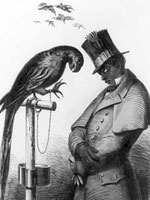
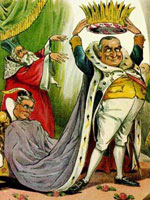
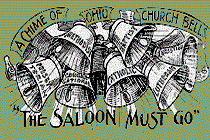
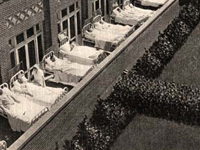
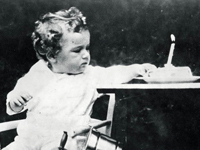
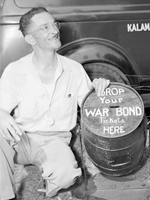
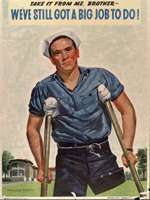
 The telephone was not invented in order to do what people eventually used it to do. It may seem obvious what a telephone is good for, but even its inventors—Alexander Graham Bell and his assistant Thomas Watson—were not clear about it when they first demonstrated it. Nor were those who attended their demonstrations and gasped in astonishment at what they heard.
The telephone was not invented in order to do what people eventually used it to do. It may seem obvious what a telephone is good for, but even its inventors—Alexander Graham Bell and his assistant Thomas Watson—were not clear about it when they first demonstrated it. Nor were those who attended their demonstrations and gasped in astonishment at what they heard. The lines might not be direct from point to point, but to and from ganglia in the form of central offices or stations, which have charge of the business, except where private parties see fit to maintain their own independent lines. Suppose this network to be established and in good working order. What a deal of running to and fro and of vexatious delay would be obviated! Smith in his office on State street, without moving from his chair, could say to Mrs. Smith at the Highlands, in his blandest tone of voice: "Going to New York tonight, my dear; have John take my carpet-bag to the Providence depot before 6 o'clock." Mrs. Smith's reply would be immediate and, of course, in a tone of cheerful acquiescence. Or Brown, in his store on Washington street, would ask a friend home to dinner, and communicate the fact to Mrs. Brown on the Back Bay, receiving at once a dutiful response which would be pleasant to the friend standing by and catching the sweet tones of her voice. Jones, in the midst of the distractions of his bills payable and bills receivable, would be interrupted for a moment by a familiar but far-away voice, informing him that his beloved wife was coming in town, shopping and would call at 2 o'clock for a little money, and then of course no pressing business elsewhere would keep him away from his counting-room at that hour. And equally, of course, his wife would receive a prompt and amiable answer, relieving her mind of all uncertainty. … The fancy will readily supply the thousand details of practical utility here suggested. State-rooms on steamboats, places in railway cars, room in a hotel, dinner from a restaurant, could be bespoken without the necessity of sending, and the satisfaction would be obtained which only a personal interview can secure. [2]
The lines might not be direct from point to point, but to and from ganglia in the form of central offices or stations, which have charge of the business, except where private parties see fit to maintain their own independent lines. Suppose this network to be established and in good working order. What a deal of running to and fro and of vexatious delay would be obviated! Smith in his office on State street, without moving from his chair, could say to Mrs. Smith at the Highlands, in his blandest tone of voice: "Going to New York tonight, my dear; have John take my carpet-bag to the Providence depot before 6 o'clock." Mrs. Smith's reply would be immediate and, of course, in a tone of cheerful acquiescence. Or Brown, in his store on Washington street, would ask a friend home to dinner, and communicate the fact to Mrs. Brown on the Back Bay, receiving at once a dutiful response which would be pleasant to the friend standing by and catching the sweet tones of her voice. Jones, in the midst of the distractions of his bills payable and bills receivable, would be interrupted for a moment by a familiar but far-away voice, informing him that his beloved wife was coming in town, shopping and would call at 2 o'clock for a little money, and then of course no pressing business elsewhere would keep him away from his counting-room at that hour. And equally, of course, his wife would receive a prompt and amiable answer, relieving her mind of all uncertainty. … The fancy will readily supply the thousand details of practical utility here suggested. State-rooms on steamboats, places in railway cars, room in a hotel, dinner from a restaurant, could be bespoken without the necessity of sending, and the satisfaction would be obtained which only a personal interview can secure. [2]